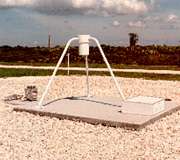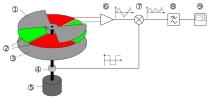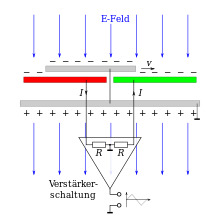Field mill



A field mill is a specialized instrument used for measuring the strength of electrical fields in the atmosphere near thunderstorm clouds. They are used in the launch criteria for rockets bound for orbit, as well as the now-retired Space Shuttle, to avoid lightning strikes. They are also used in outdoor laboratories for lightning protection equipment to determine favorable experiment conditions.[1]
The "mill" is a typical rotating shutter design in the instrument. It is usually deployed airborne and flown through anvil head clouds to make measurements.
KSC electric field mill network
At Kennedy Space Center (KSC) in Florida, 31 field mills are deployed around KSC and the nearby Cape Canaveral Air Force Station. Data from the field mills help forecasters determine when electric charge aloft might trigger lightning during a launch.[2]
References
- ↑ KAPOW! Superhero Science (Television Documentary). Discovery Network; Actuality Productions. 2003.
- ↑ "KSC Electric Field Mill Network". NASA MSFC.
External links
- About Electric Field Mill Operation
- CAMEX-4 MIPS Field Mill
- Application of Airborne Field Mill Data for Use in Launch Support
- Florida Airborne Field Mill Research May Improve Launch Weather Criteria
- http://www.precisionstrobe.com/jc/fieldmill/fieldmill.html Build a homemade field mill
- INEO SUEZ
- Lightning Research Laboratory—University of Florida